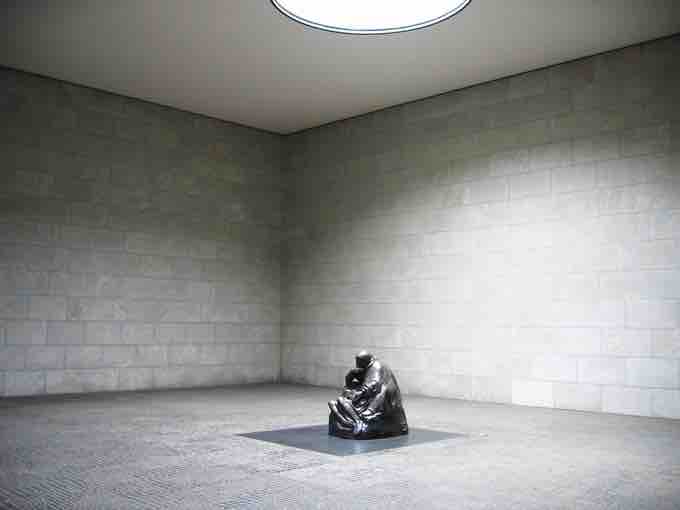Expressionism was a modernist movement, beginning with poetry and painting, that originated in Germany at the start of the 20th century. It emphasized subjective experience, manipulating perspective for emotional effect in order to evoke moods or ideas. Expressionist artists sought to express meaning or emotional experience rather than physical reality.
Expressionism was developed as an avant-garde style before the First World War and remained popular during the Weimar Republic, particularly in Berlin. The style extended to a wide range of the arts, including painting, literature, theatre, dance, film, architecture, and music.
Expressionist painters had many influences, among them Edvard Munch, Vincent van Gogh, and several African artists. They were also aware of the Fauvist movement in Paris, which influenced Expressionism's tendency toward arbitrary colors and jarring compositions.
Die Brucke
In 1905, a group of four German artists, led by Ernst Ludwig Kirchner, formed Die Brücke (the Bridge) in the city of Dresden. Later members were Emil Nolde, Max Pechstein and Otto Mueller. The group aimed to eschew the prevalent traditional academic style and find a new mode of artistic expression, which would form a bridge (hence the name) between the past and the present. They responded both to past artists such as Albrecht Dürer, Matthias Grünewald and Lucas Cranach the Elder, as well as contemporary international avant-garde movements. As part of the affirmation of their national heritage, they revived older media, particularly woodcut prints. Die Brucke is considered to be a key group of the German Expressionist movement, though they did not use the word itself. The group is often compared to both Primitivism and Fauvism due to their use of high-keyed, non-naturalistic color to express extreme emotion like the Fauvists and a crude drawing technique that eschewed complete abstraction, like the Primitivists.
Der Blaue Reiter
A few years later, in 1911, a like-minded group of young artists formed Der Blaue Reiter (The Blue Rider) in Munich. The group was founded by a number of Russian emigrants, including Wassily Kandinsky, Alexej von Jawlensky, Marianne von Werefkin, and native German artists, such as Franz Marc, August Macke and Gabriele Münter. Like Die Brucke, Der Blaue Reiter is considered a major feature of the German Expressionist movement.
Within the group, artistic approaches and aims varied from artist to artist, however, there was a shared desire to express spiritual truths through their art. Der Blaue Reiter as a group believed in the promotion of modern art, the connection between visual art and music, the spiritual and symbolic associations of color, and a spontaneous, intuitive approach to painting. Members were interested in European medieval art and primitivism, as well as the contemporary, non-figurative art scene in France. As a result of their encounters with cubist, fauvist and Rayonist ideas, they moved towards abstract art.
Kathe Kollwitz
Käthe Kollwitz (1867 – 1945) was a German painter, printmaker, and sculptor whose work offered an eloquent and often searing account of the human condition, and the tragedy of war, in the first half of the 20th century. Initially her work was grounded in Naturalism, and later took on Expressionistic qualities . Inspired by a performance of Gerhart Hauptmann's The Weavers, which dramatized the oppression of the Silesian weavers in Langembielau and their failed revolt in 1842, Kollwitz produced a cycle of six works on the Weavers theme. Rather than a literal illustration of the drama, the works were a free and naturalistic expression of the workers' misery, hope, courage, and, eventually, doom. The Weavers became Kollwitz' most widely acclaimed work.

Mother with her Dead Son, by Käthe Kollwitz
This Kollwitz sculpture is a WWII war memorial.
Egon Schiele
Egon Schiele (1890 – 1918) was an Austrian painter. A protégé of Gustav Klimt, Schiele was a major figurative painter in the early 20th century. His work is noted for its intensity, as well as for the many self-portraits he produced. The twisted body shapes and expressive line that characterize Schiele's paintings and drawings mark the artist as an early exponent of Expressionism. Schiele was influenced by his mentor, Klimt, as well as by Edvard Munch, Jan Toorop, and Vincent van Gogh. Schiele explored themes not only of the human form, but also of human sexuality. Many viewed Schiele's work as being grotesque, erotic, pornographic, or disturbing, focusing on sex, death, and discovery .

Sitzender weiblicher Akt mit aufgestützen Ellbogen, by Egon Schiele
Schiele's depiction of female nudes scandalized his contemporaries.
Paula Mendersohn-Becker
Paula Modersohn-Becker (1876 – 1907) was a German painter and one of the most important representatives of early Expressionism. In a brief career, cut short by her death at the age of 31, she created a number of groundbreaking images of great intensity. Modersohn-Becker studied briefly at the École des Beaux-Arts in Paris and was influenced by French post impressionists Paul Cézanne, Vincent van Gogh, and Paul Gauguin. On her last trip to Paris in 1906, she produced a series of paintings about which she felt great excitement and satisfaction. During this period of painting, she produced her initial nude self-portraits-- something unprecedented by a female painter-- and portraits of friends such as Rainer Maria Rilke and Werner Sombart .

Selbstporträt, by Paula Modersohn-Becker, 1906
Female nude self-portraits were uncommon subjects in this era.